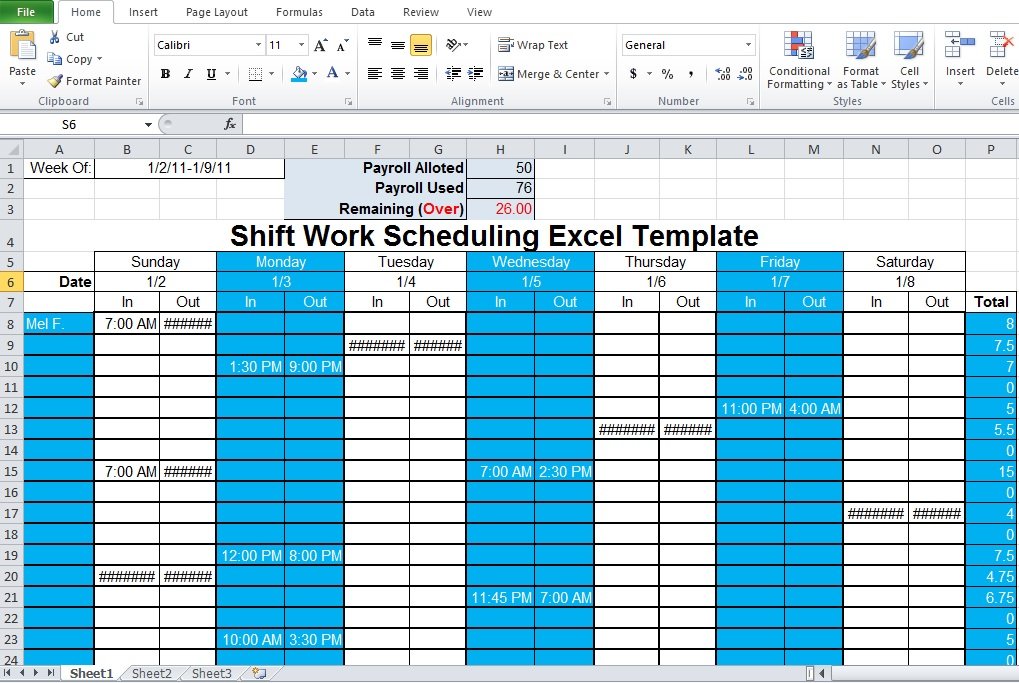

Sometimes, companies pay employees less than their regular rate for an on-call shift because they're not performing their duties. On-call shifts are when employees are at home or off-site but must be available to work if called. As this typically requires more of an overall time commitment from the employee, they rest between shifts. Restaurant and retail staff typically work this shift when their workplaces are busy or short-staffed. For example, an employee may work from 8:00 a.m. Different from taking an hour's break for lunch or dinner, there are typically multiple hours between shifts. Split shifts are when employees work more than one shift in a day, or work two half-shifts. This is most common in the retail and restaurant industries, as availability and business needs change regularly. For example, an employee might work the first shift on Monday, have the day off on Tuesday, and have a second shift on Wednesday. Rotating shifts are when employees might work different shifts every week. This can help a company provide consistent service to customers or better estimate output by having dedicated resources.

and work that daily, while another crew works from 12:00 p.m. For example, package handlers at delivery companies might choose a shift from 6:00 a.m. Companies might have multiple fixed shifts to handle work at different times of the day. Related: What is a Night Shift? (With Definition and Tips) Fixed shiftĪ fixed shift is one where employees work the same schedule each week. Some examples of third-shift roles include: In other industries, like healthcare or law enforcement, facilities need employees on this shift to handle emergencies at night. For example, retail stores might hire employees to receive new merchandise and stock shelves overnight. Third shift employees can complete tasks to prepare for the next day. Some companies offer higher salaries to employees working the third shift, as it's such an unusual schedule. or midnight and work until the start of the first shift the following day. Third shift employees might start work at 10:00 p.m. Third shifts, or night shifts, are for employees that work in the evenings, sometimes into the next day. Related: Interview Questions for Retail Positions Third shift Roles that typically work these shifts include: These hours ensure a smooth transition between shifts as people start and leave their first and third shifts. These typically start during a first shift and end in a third shift, overlapping with the other employees. Second shifts, or afternoon shifts, is for companies that need employees to work later in the day. Roles that work on the first shift include: Retail stores and restaurants schedule employees to work the first shift consistently, or alternate between first shifts and other shifts as needed. First shift employees often interact with each other and customers, as people typically share this schedule. Employees perform work within standard working hours, typically starting after 7:00 a.m. The first shift is the most common shift among corporations. Here are some of the most common types of work shifts: Depending on the industry, your company might need employees to complete work at different times of the day or on different days of the week. There are several work shifts that businesses might need to operate.

Many industries, like retail, restaurants, law enforcement, and healthcare, need people to work several or rotating shifts. A company or facility sets their work shifts depending on when they need to provide goods or services to their customers or how many hours they may need for production based on demand. One of the most common work shifts employed across many corporate industries is from 9:00 a.m. What is a work shift?Ī work shift is a dedicated time in which a business requires people to work. In this article, we discuss what work shifts are and what you can expect from them, list the different types, and examine some pros and cons of each. Understanding the different types of work shifts can help you decide which one suits your lifestyle best. Because of this, many organizations need employees to work at different hours of the day. Companies in different industries open and work at various times throughout the day depending on their unique needs.


 0 kommentar(er)
0 kommentar(er)
